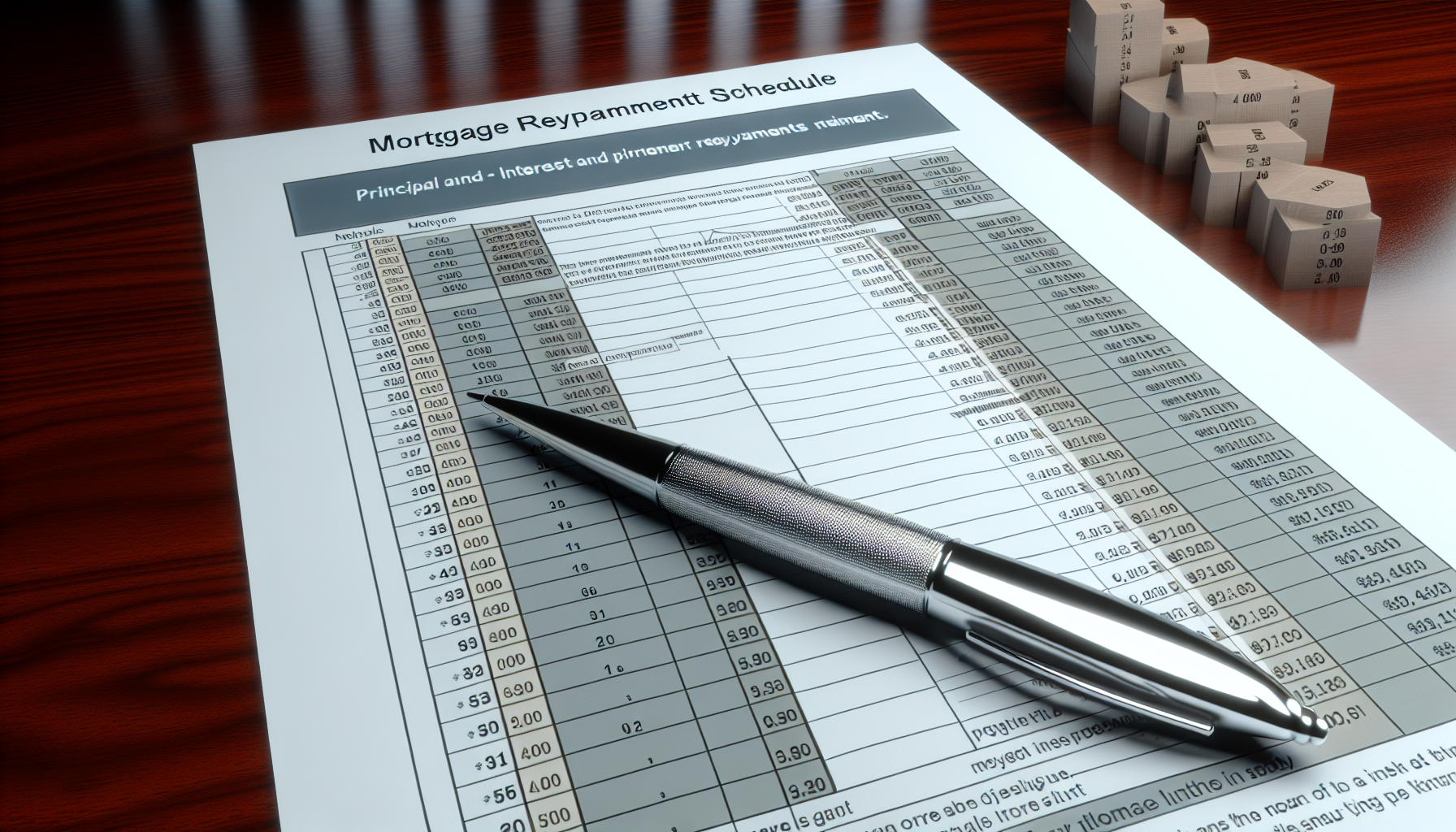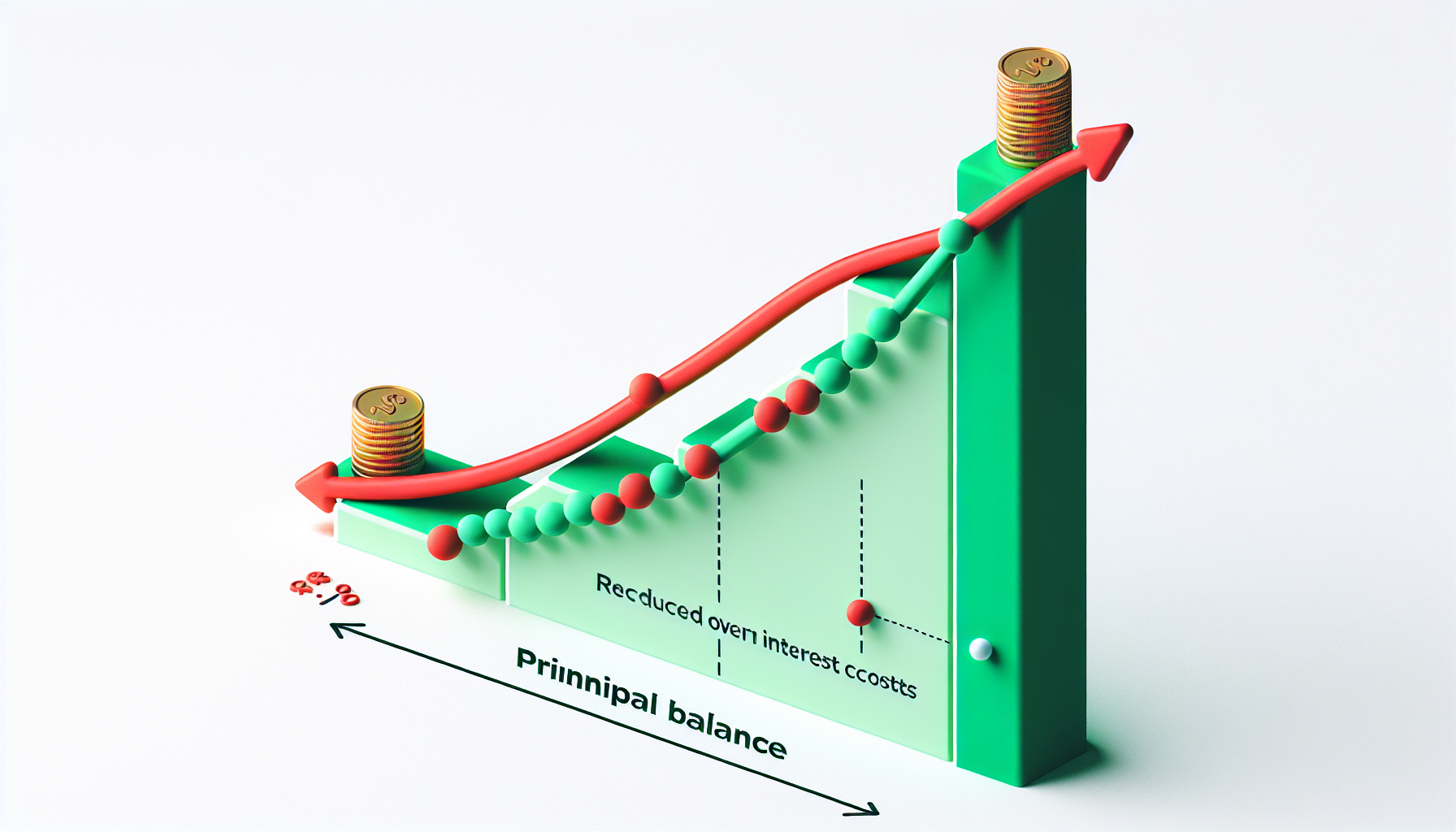How much will your home loan cost you each month? Calculate it now with home loan calculators. They are an essential resource for prospective homeowners aiming to understand their potential monthly expenses and long-term financial commitment to a mortgage. Read on to learn how to make the most of these tools and what further insights you can look forward to in this article.
Key Takeaways
- Home loan calculators are essential for estimating monthly repayments and understanding the total cost of a loan by considering the loan amount, APR, and other specific details.
- The choice between different mortgage options such as fixed-rate and variable-rate loans, the impact of repayment frequency, and the benefits of making extra repayments are critical for optimising loan management and reducing total interest.
- Future financial planning for home loans should include an awareness of the Reserve Bank’s role in interest rates, the comprehensive view provided by comparison rates, and the necessity of professional advice for personalised financial strategies.
Decoding Home Loan Calculators: A Primer

Home loan calculators are powerful tools that can help you navigate the complexities of mortgage financing. They give potential borrowers the ability to estimate monthly repayments and overall loan costs before committing to a mortgage. By inputting specific details such as the loan amount, interest rate, and loan term, these calculators can provide a clear picture of what to expect when taking out a home loan.
Understanding how mortgage interest is calculated is also crucial. The annual percentage rate, or APR, is the cost charged by the lender for borrowing money, and it significantly impacts your monthly repayments. The rate is applied to the loan balance to calculate the interest for each monthly payment. Thus, knowing your APR can help you anticipate your monthly outgoings accurately and plan your budget accordingly.
Types of Home Loan Calculators
Different scenarios call for different types of home loan calculators. The most common is the basic repayment calculator. By inputting the loan amount, interest rate, and term, individuals can estimate their monthly mortgage repayments. This helps potential borrowers gauge their ability to service the loan and understand the financial commitment they are considering.
Other types of calculators cater to more specific needs. Refinance calculators, for example, allow homeowners to assess the benefits of replacing their existing mortgage with a new one under different terms. Lump sum payment calculators aid borrowers in understanding the impact of making one-off additional payments towards the principal. This can be particularly useful for those who receive an unexpected windfall and are considering using it to pay down their mortgage.
Calculators: home loan calculators, Split Loan Calculator, Remaining Balance Calculator, Lump Sum Payments Calculator, How Long to Repay my Loan Calculator, Extra Repayments Calculator
How to Use a Home Loan Calculator
Using a home loan calculator is straightforward, but it requires accurate input to ensure correct calculation of monthly repayments. It all begins with the principal amount you wish to borrow. This is the amount you need to purchase your property; minus any deposit you have saved.
Next, you need to select your preferred repayment type, loan term, and loan-to-value ratio. These variables significantly impact the monthly repayments, so it’s worth experimenting with these figures to see how each one alters the monthly payment amount. This can help you tailor your loan to suit your financial circumstances and goals.
The Mechanics of Mortgage Repayments

Understanding the mechanics of mortgage repayments is key to managing your home loan effectively. Each repayment consists of two parts: the principal and interest. The principal is the original loan amount, and the interest is the cost of borrowing that principal. By staying informed about principal and interest repayments and considering only repayments that suit your financial situation, you can better manage your home loan.
The interest on a home loan is calculated daily and then tallied up for the month. This method accommodates the varying number of days in each month, affecting the monthly interest amount. In the early phases of the loan, more interest is paid despite a reduced principal, ensuring that the repayment amount remains constant. With home loan interest calculated in this manner, borrowers can better understand their repayment schedule.
The formula for calculating monthly repayments takes the loan term, the loan amount, and the interest rate into account.
Navigating Interest Rates with Precision
Interest rates play a significant role in the cost of your home loan. They represent the annual cost of borrowing the principal amount, typically expressed as the Annual Percentage Rate (APR). A change in interest rates can lead to higher or lower monthly loan repayments. For example, an interest rate change from 3.0% to 3.5% on a 30-year $500,000 mortgage will alter the monthly repayments, making you wonder how much interest you’ll end up paying over the loan term.
Moreover, fluctuations in interest rates significantly alter the total interest paid over the life of a mortgage. Higher rates increase the total interest accrued, making the loan more expensive in the long run. Therefore, understanding how interest is calculated and how interest rates impact your loan is essential for effective financial planning.
Tailoring Your Loan Term for Optimal Results

The length of your loan term has a significant impact on the total amount of interest you pay. A longer loan term can lead to higher total interest costs over the life of the loan, despite providing immediate budget relief through lower monthly payments. Some lenders might even charge a higher interest rate due to the increased risk associated with longer loan periods.
On the other hand, shorter loan terms involve higher monthly payments, which may be more challenging to manage. However, they can lead to substantial savings on the total interest paid and contribute to achieving your goal of becoming debt-free sooner. Therefore, tailoring your loan term to fit your financial situation and objectives is a crucial step in managing your home loan effectively.
Repayment Frequency: Finding Your Rhythm

The frequency of your repayments can also have a significant impact on your loan. Switching to more frequent repayments, like weekly or fortnightly, can help lower the principal loan amount quicker, ultimately leading to reduced total interest expenses.
The Half Monthly Repayment Method, for example, effectively leads to making an extra month’s payment annually. This can fast-track the loan payoff and save on interest. However, while more frequent repayments can lead to substantial savings, it’s important to consider any potential extra fees or charges that may arise from choosing these options, as these costs can offset the savings made on monthly interest repayment.
Assessing the Impact of Extra Repayments

Making additional payments or lump sum contributions to your mortgage can have a significant impact on your loan. These extra repayments can reduce the overall interest charged by decreasing the principal balance, potentially shortening the loan term.
The timing of a lump sum payment is crucial. Making this payment earlier in the loan term can maximise interest savings and further reduce the time it takes to pay off the mortgage.
Additionally, an offset account linked to a home loan can reduce the loan balance one pays interest on, thus saving on home loan interest over time.
Weighing Fixed Rate Periods Against Variable Rates
When choosing a home loan, one of the decisions you’ll face is whether to go for a fixed-rate or variable-rate loan. Fixed-rate home loans lock in the interest rate for a set fixed rate period, offering stability and predictability in repayments regardless of external economic changes. While this provides peace of mind, fixed-rate loans often offer lower flexibility in terms of extra repayments and features like redraw facilities.
On the other hand, variable-rate loans have interest rates that fluctuate with the market, potentially affecting monthly costs. These loans are more flexible, potentially accommodating more frequent additional payments without incurring penalties. Therefore, it’s important to weigh the pros and cons of each type of loan before making a decision.
Planning Ahead: Future Refinancing Options
Home loan calculators, such as refinance calculators, can assist homeowners in comparing current mortgage terms with potential refinancing options. These tools allow for a comparison between current mortgage terms and potential new ones, estimating payment and interest cost differences.
Mortgage switching calculators, for example, can assist homeowners in estimating the payment and interest cost differences when contemplating a change from their existing loan to a new one. These calculators can be particularly useful for homeowners who are considering refinancing their mortgage to take advantage of lower interest rates or better loan terms.
Unveiling the True Cost: Comparison Rate Inclusion
When considering a home loan, it’s important to look beyond the advertised interest rate and consider the comparison rate. The comparison rate provides a more comprehensive picture than the advertised interest rate alone, including fees and other costs, ultimately offering a true understanding of the total cost of the loan.
A comparison rate incorporates not only the interest payments based on the advertised interest rate, but also upfront fees, ongoing fees, and discharge fees, to reflect the actual costs associated with the loan. However, while comparison rates can provide a useful guide, they may not reflect an individual’s specific loan conditions or the true cost in every scenario.
Understanding the Reserve Bank’s Role
The Reserve Bank plays a significant role in the home loan market. It sets the official cash rate, which significantly impacts variable interest rates offered by lenders for home loans, affecting the cost of borrowing.
Changes in the official cash rate influence the variable interest rates used in home loan calculators, thereby affecting the estimated monthly repayments and overall loan costs. Therefore, keeping an eye on the Reserve Bank’s cash rate adjustments can help you anticipate potential increases or decreases in your loan repayments.
Investment Property Insights
If you’re considering investing in property, specific home loan calculators can provide valuable insights. Repayment calculators for investment properties help assess cash flow by showing potential mortgage repayments, which can change with varying interest rates.
These calculators can also estimate the total interest payable on the loan, which is influenced by the interest rate input into the tool. Furthermore, investment property home loan calculators can estimate borrowing capacity based on income and expenses, helping investors determine the types of properties they can afford.
When to Seek Professional Advice
While home loan calculators are a handy tool, they cannot replace the personalised guidance offered by a professional advisor. Before acting on calculations from mortgage calculators, it’s crucial to consider personal circumstances and recognise when to seek professional advice.
Professional advisors can provide essential guidance and personalise financial advice to align with an individual’s unique circumstances, income, and financial goals. They are particularly beneficial in the following situations:
- Expatriates
- Imminent retirees
- Individuals with complex financial situations may require specialized financial planning to navigate their particular needs effectively.
Summary
In conclusion, understanding home loan calculations is critical to effective financial planning. From choosing the right home loan calculator to understanding the impact of interest rates, loan terms, and repayment frequencies, each decision plays a significant role in managing your home loan. Remember that while home loan calculators are a useful tool, they cannot replace personalised professional advice. So, when in doubt, don’t hesitate to seek professional help to make the most of your financial situation and achieve your homeownership dreams.
Frequently Asked Questions
What is the formula for calculating interest on a home loan?
To calculate interest on a home loan, you can use the formula: (Loan balance * Interest rate / 365) * Number of days in the month. This gives you the daily interest that is then multiplied by the number of days in the month.
How does a home loan calculator work?
A home loan calculator works by taking the loan amount, interest rate, and loan term as input and calculates the monthly repayments and overall loan costs, helping you understand the financial implications of a mortgage.
What is the difference between a fixed-rate and a variable-rate home loan?
With a fixed-rate home loan, you have stable repayments as the interest rate is locked for a set period. On the other hand, a variable-rate loan has fluctuating interest rates, leading to changes in your monthly costs. Choose based on your preference for stability or flexibility.
What is a comparison rate?
A comparison rate gives a more complete view of the total cost of a loan, including fees and other expenses, beyond just the advertised interest rate.
How does the Reserve Bank affect home loan rates?
The Reserve Bank’s decisions, particularly on the official cash rate, have a direct impact on the variable interest rates for home loans, ultimately influencing the cost of borrowing.












